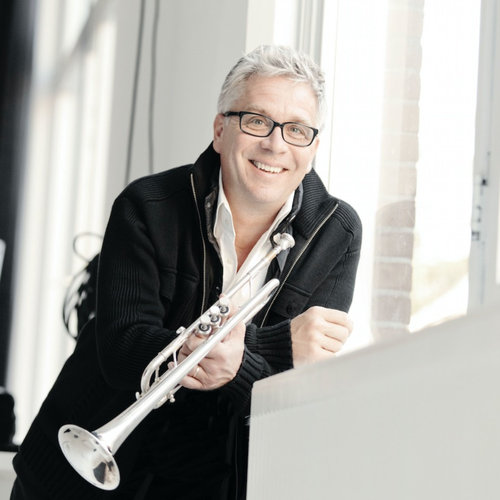Hardenberger takes flight in “Aerial” but BSO’s Mahler’s Fifth proves mixed

Håkan Hardenberger performed HK Gruber’s “Aerial” with Andris Nelsons and the Boston Symphony Orchestra Thursday night.
Perhaps it was fitting that the season’s first snowstorm Thursday night coincided with Andris Nelsons conducting the Boston Symphony Orchestra in Gustav Mahler’s turbulent Symphony no. 5.
Granted, the Mahler Fifth charts an inner, emotional journey, not a meteorological one. But Mahler was an avid outdoorsman and more than a few of the symphony’s raging gestures corresponded nicely with the blustery gusts of a New England Nor’easter.
Thursday’s performance marked the second time Nelsons has conducted Mahler at Symphony Hall in less than a month. While October’s account of the Resurrection symphony (No. 2) was mature and settled, this week’s interpretation of the Fifth felt more like a work in progress.
Certainly Nelsons had the big things in hand. Tempos were well-judged and mostly on the swift side. Contrasts between the music’s stylistic extremes were, for the most part, clearly etched. The conductor’s sense of the Fifth’s structure and overriding character was strong and, while he energetically pushed things along, he also knew when to step back and take in the view.
The score’s smaller details, though, especially in its agitated opening movements, tended towards blurriness. Transitions were occasionally ragged. Balances never quite settled; brasses dominated the orchestral fabric. And, for all the lush lyricism Nelsons drew from the BSO in the opening funeral march, both it and the second movement lacked a consistent charge of tension.
It took until the third-movement Scherzo for the reading to come into its own. Here, from the lilting, opening dance to the brash horn calls and rustic ländler at its center, Nelsons drew out a lovely sense of atmosphere and personality from his massed forces.
He did the same in the Adagietto, which never dawdled but flowed beautifully and served as a true introduction to the Rondo-Finale. That movement, with its sunny tunes and boisterous counterpoint, capped everything off with an ebullient blast.
Taut solos from principal trumpet Thomas Rolfs, burnished moments from the BSO’s horn and trombone sections, and Jessica Zhou’s rich-hued harp playing in the Adagietto were among the night’s highlights. Yet parts of this Mahler were atypically unfocused, at least by Nelsons’ standard.
Before the Mahler, the Swedish trumpeter Håkan Hardenberger appeared as soloist in HK Gruber’s Aerial.
A two-movement trumpet concerto premiered in 1999, Aerial offers, in its first movement, a fascinating deconstruction of the trumpet to its point-of-origin (in Sweden, at least), the cow’s horn. The soloist is instructed to employ a variety of extended techniques – multiphonics (singing and playing a note simultaneously), bending pitches, distorting the instrument’s timbre, utilizing an array of mutes, etc. – on a pair of trumpets (the standard C-trumpet and a piccolo trumpet in B-flat), taking up, at movement’s climax, an actual cow’s horn.
The second movement, “Gone Dancing,” reimagines the musical world of Fred Astaire and Ginger Rogers, juxtaposing jaunty, syncopated figures and languorous, quasi-Expressionist melodies in a resoundingly peculiar essay that grows faster and louder as it progresses – only to suddenly disintegrate at the end.
On Thursday, Hardenberger, for whom Aerial was written, dispatched its solo part with gleaming tone and a superb command of Gruber’s idiosyncratic style. What’s more, there was a fresh, improvisational quality to his performance that befit both the music’s allusions to jazz and Gruber’s intrinsic sense of theater.
Nelsons, leading his third contemporary score in as many weeks, was totally in his element in Aerial. Everything was carefully balanced, and the BSO played with conspicuous transparency in the harmonically static but discreetly colored first movement. The orchestra dug into the slashing dance rhythms of the finale with aplomb, exhibiting tremendous spirit in the asymmetrical, vaguely Arabian tunes that mark its last part.
The program will be repeated 1:30 p.m. Friday and 8 p.m. Saturday at Symphony Hall. bso.org; 888-266-1200.
Posted in Performances